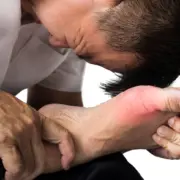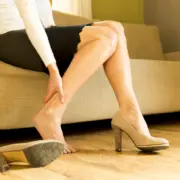When Knee or Joint Pain Means Arthritis
Knee pain can have many causes, and among the most common is arthritis. There are more than 100 different forms of arthritis and, although there is no cure for arthritis, there are many effective treatments that manage it, slow the progression, and offer relief from deteriorating joints.
Osteoarthritis and post-traumatic arthritis are two common sources of joint deterioration.
Osteoarthritis and Post-Traumatic Arthritis
Osteoarthritis is degenerative, meaning that it is the result of wear and tear on the body’s joints. Out of all osteoarthritis cases, more than one in every ten stems from the effects of knee, hip, or ankle injuries. That equates to more than five and a half million cases in the United States.
Sports collisions, falls and other impact events are major causes of post-traumatic arthritis. The initial injury causes joint damage which accelerates the joint’s deterioration and subsequent failure. Joints that are damaged in an impact event are nearly seven times more likely than an uninjured joint to experience arthritis, even with proper medical treatment.
Impact events can cause the body’s own protective responses to attack cartilage cells – leading to joint deterioration. Since post-traumatic arthritis is the result of an injury, it can only be prevented by avoiding injury. Once the damage has occurred, post-traumatic arthritis from the joint deterioration cannot be prevented. However, there are factors that can make it worse.
Continued joint use and strain on the joint from factors such as excess body weight can further accelerate the joint’s arthritis condition. Post-traumatic arthritis progresses over time, so it is important to seek medical treatment to slow the joint function’s deterioration. This is especially true for active lifestyles.
Symptoms of Deteriorated Joint Function
Joint pain, swelling or accumulation of fluid within the joint, and reduced ability to perform basic joint function (e.g. athletic movements, ascending or descending stairs, walking) are all indicators of joint damage.
Arthritic Joint Treatment Options
A thorough medical evaluation will reveal the extent of joint damage and inform potential treatment options. The medical evaluation will examine your medical history, the incident details leading to the impact injury, current performance limitations, and basic joint functionality.
In addition to the consideration of the case history, a physical examination will be supplemented with X-rays or imaging to provide a full understanding of the extent of the damage. Laboratory tests may also be incorporated to verify the actual arthritic condition.
There are both nonsurgical and surgical treatment options for arthritic joints. Nonsurgical treatments include lifestyle management (e.g. weight loss, activity reductions to reduce strain on the affected joint), physical therapy plans designed to strengthen the muscles that surround the impacted joint, medications to manage joint pain, and assistive devices.
When nonsurgical treatment is no longer effective for arthritic joints, surgical options including cleaning out the joint, reconstructing the joint, and full joint replacement are considered. The optimal surgical treatment depends on the actual type and location of the arthritis as well as how much the disease has damaged the affected joint. In complex situations, multiple surgical options may be considered.
Arthroscopic debridement, or joint cleansing, is a less invasive surgical procedure used to remove inflamed tissue, loose cartilage, or bone spurs that impede the deteriorated joint function. This option is frequently considered in the early stages of arthritis.
Joint reconstruction and joint replacement are more invasive and more involved surgical options.
If the damaged joint is a source of chronic pain or if the joint’s ability has been substantially impeded, joint reconstruction may be considered. For advanced arthritis cases, where the joint surface has been severely damaged or destroyed, joint replacement is considered.
Surgical options can offer lasting improvement for arthritic joints and are frequently considered for active lifestyles and when nonsurgical options yield limited joint pain relief. Surgical treatments can reduce joint pain and improve functionality over time, but surgery is generally more involved and naturally carries with it some risk. Proper recovery and rehabilitation regimens are also essential components of surgical joint treatment options.
Osteoarthritis or post-traumatic arthritis need not be the end of your active lifestyle. There are quality treatment options available. Seeking proper medical evaluation and timely treatment can reduce arthritic joint pain and loss of joint function to put you on the path to improved activity.





